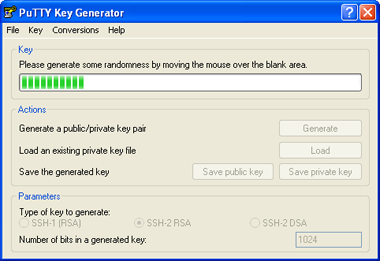Git Generate Public Key Mac
- Jul 25, 2019 This post will be pretty straightforward and will cover Windows, Mac, and Linux on how to generate SSH keys for Git authorization.
- Aug 08, 2016 Do you hate typing in your username and password for GitHub everytime you make a push? Well that ends today because we are going to learn to.
- How can I access my SSH public key? Then you've to generate your RSA key by ssh-keygen first. Share improve this answer. On a Mac, you can.
Creating a SSH Public Key on OSX¶. You generate an SSH key through Mac OS X by using the Terminal application. Once you upload a valid public SSH key, Gerrit can authenticate you based on this key. Feb 15, 2016 Creating Keys. This is a brief guide to creating a public/private key pair that can be used for OpenSSL. While the 'easy' version will work, I find it convenient to generate a single PEM bundle and then export the private/public key from that as needed. Ssh keygen generate public from private key. Create and add your SSH key pair. It is best practice to use Git over SSH instead of Git over HTTP. In order to use SSH, you will need to: Create an SSH key pair; Add your SSH public key to GitLab. Creating your SSH key pair. Go to your command line. Follow the instructions to generate your SSH key pair. Adding your SSH public key to GitLab.
Hi there! This post will be pretty straightforward and will cover Windows, Mac, and Linux, so if you don’t know how to do it already, read on.
Windows
/ashampoo-burning-studio-key-generator.html. Just follow these 5 steps:
- Go to this address, and download Git for Windows, after the download install it with default settings
- Open Git Bash that you just installed (Start->All Programs->Git->Git Bash)
- Type in the following: ssh-keygen -t rsa (when prompted, enter password, key name can stay the same)
- Open file your_home_directory/.ssh/id_rsa.pub with your favorite text editor, and copy contents to your Git repository’s keys field (GitHub, beanstalk, or any other repository provider), under your account.
- Be sure that you don’t copy any whitespace while copying public key’s content (id_rsa.pub)
Note: your_home_directory is either C:Usersyour_username (on Windows Vista / 7 / 8 / 10), or C:Documents and Settingsyour_username (on Windows XP)
Mac
Follow these 5 steps:

- Start the terminal
- Navigate to your home directory by typing: cd ~/
- Execute the following command: ssh-keygen -t rsa (when prompted, enter password, key name can stay the same)
- Open the file you’ve just created ~/.ssh/id_rsa.pub with your favorite text editor, and copy contents to your Git repository’s keys field (GitHub, beanstalk, or any other repository provider), under your account.
- Be sure that you don’t copy any whitespace while copying public key’s content (id_rsa.pub)
Linux (Ubuntu)
Follow these 5 steps:
- Open console
- cd ~
- ssh-keygen -t rsa (when prompted, enter password, key name can stay the same)
- open file /home/your_username/.ssh/id_rsa.pub with your favorite text editor, and copy contents to your Git repository’s keys field (GitHub, beanstalk, or any other repository provider), under your account.
- Be sure that you don’t copy any whitespace while copying public key’s content (id_rsa.pub)
Additional info
When you create private/public SSH keys on your machine (that’s what you did in the above steps), it’s not enough. You need to give your public key to the repository in order to pair the Git server with your local machine (that’d be steps 4. and 5. above).
Most of the popular repositories will give you web interface access to the application, and here’s how it looks like on Github:
After this step, you’re ready to start using Git.
Conclusion
I hope this wasn’t too complicated to follow, and also I hope it was helpful to someone!
Cheers!
Public Key Definition
____________________________________________________________________________________________
Generate Public Ssh Key Git
Note! This article was revised on Jul 26, 2019. The original article was posted in 2011 by Mladen Lotar.